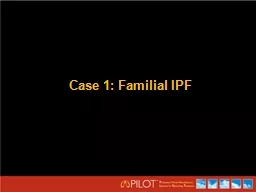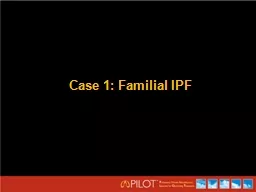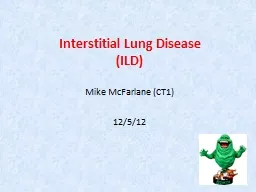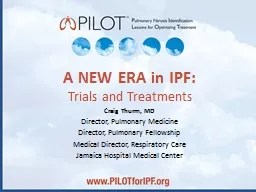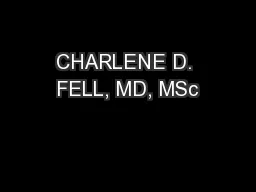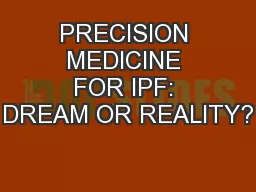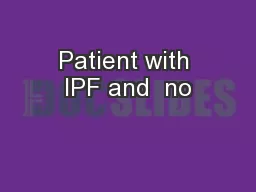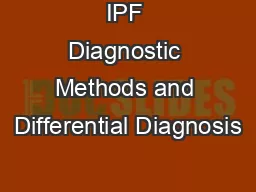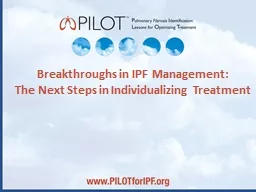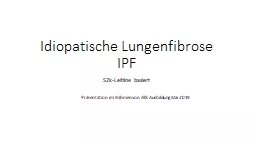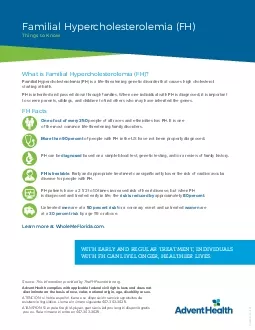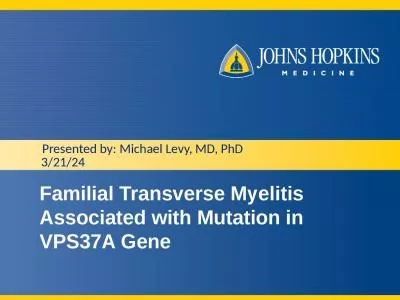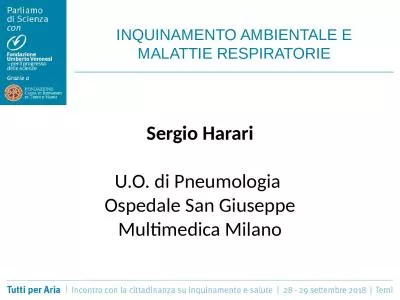PPT-Case 1: Familial IPF Case Presentation: Familial IPF
Author : luanne-stotts | Published Date : 2018-11-06
56yearold Hispanic female with a family history of aortic aneurysm underwent a routine chest CT to assess her aorta No respiratory symptoms Medical history ho SVT
Presentation Embed Code
Download Presentation
Download Presentation The PPT/PDF document "Case 1: Familial IPF Case Presentation:..." is the property of its rightful owner. Permission is granted to download and print the materials on this website for personal, non-commercial use only, and to display it on your personal computer provided you do not modify the materials and that you retain all copyright notices contained in the materials. By downloading content from our website, you accept the terms of this agreement.
Case 1: Familial IPF Case Presentation: Familial IPF: Transcript
Download Rules Of Document
"Case 1: Familial IPF Case Presentation: Familial IPF"The content belongs to its owner. You may download and print it for personal use, without modification, and keep all copyright notices. By downloading, you agree to these terms.
Related Documents

